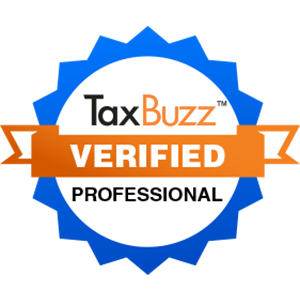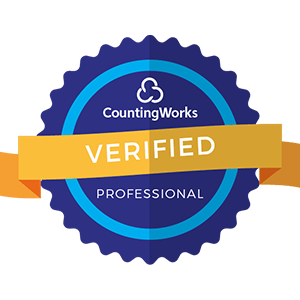
In today's fast-paced business world, the phrase "our people are our greatest asset" has become more than just a catchy slogan—it's a fundamental truth. But how do you actually invest in your people in a way that pays off? Enter Human Capital Management (HCM) solutions, the unsung hero of the modern workplace.
For small and medium enterprises (SMEs), implementing an HCM system might seem like a big step. You might be wondering: Is it really worth the investment? Can my business afford it? Will it actually make a difference?
Spoiler alert: The answer is a resounding yes.
Let's dive into the world of HCM solutions and discover why they're not just a nice-to-have, but a must-have for businesses looking to thrive in the 2020s and beyond.

Before we get into the nitty-gritty of ROI, let's break down what we're talking about. HCM solutions are comprehensive software platforms that help businesses manage their entire employee lifecycle—from recruitment and onboarding to performance management and offboarding.
Think of it as the Swiss Army knife of HR tech. It's got tools for:
Now, you might be thinking, "That sounds great for big corporations, but my business is different." And you're right—your business is unique. But here's the kicker: HCM solutions are becoming increasingly accessible and customizable for SMEs. They're no longer just for the big players.
Before we talk about the return on investment, let's consider the cost of not investing in HCM. It's like deciding not to service your car—it might save you money in the short term, but it's going to cost you big time down the road.
Without proper systems in place, you're at risk of:
Manual processes and disjointed systems lead to:
Without tools to foster engagement, you're facing:
These hidden costs add up quickly. Now, let's look at how HCM solutions can turn these challenges into opportunities.

Now for the exciting part—let's break down the tangible ways HCM solutions deliver ROI for SMEs.
The Problem: In many SMEs, HR processes are manual and time-consuming. Think endless spreadsheets, paper forms, and email chains that never seem to end.
The HCM Solution: Automation and streamlined workflows.
The ROI:
Real-world example: A 100-employee marketing agency implemented an HCM solution and saved their HR manager 15 hours per week—that's nearly 800 hours per year! At an average salary of $30/hour, that's $24,000 in annual savings just from time efficiency.
The Problem: Bad hires are expensive. The U.S. Department of Labor estimates that the cost of a bad hire can reach up to 30% of the employee's first-year earnings.
The HCM Solution: Data-driven recruitment and applicant tracking systems.
The ROI:
Real-world example: A tech startup with 50 employees reduced their average time-to-hire from 45 days to 30 days and improved their first-year retention rate by 15%. For a company hiring 10 new employees a year at an average salary of $60,000, this could translate to savings of over $100,000 annually in recruitment and training costs.
The Problem: Without structured development programs, employees stagnate, and companies miss out on internal talent.
The HCM Solution: Integrated learning management and performance tracking.
The ROI:
Real-world example: A manufacturing SME with 200 employees implemented an HCM learning module. Within a year, they filled 5 management positions internally, saving an estimated $50,000 in recruitment costs and reducing onboarding time by 50%.
The Problem: Many SMEs make HR decisions based on gut feeling rather than data, leading to suboptimal outcomes.
The HCM Solution: Integrated analytics and reporting tools.
The ROI:
Real-world example: A retail chain with 15 locations used HCM analytics to optimize their staffing levels. By aligning employee schedules with peak customer hours, they increased sales by 3% while reducing overtime costs by 10%, resulting in an annual profit increase of $150,000.
The Problem: Keeping up with labor laws and regulations is complex and time-consuming. Mistakes can be costly.
The HCM Solution: Automated compliance tracking and reporting.
The ROI:
Real-world example: A healthcare provider with 150 employees faced a labor audit. Thanks to their HCM system, they were able to provide all required documentation within 24 hours, avoiding potential fines and demonstrating their commitment to compliance.
While ROI is often measured in dollars and cents, the benefits of HCM solutions extend far beyond the balance sheet. Let's explore some of the intangible, but equally valuable, returns:
HCM solutions foster openness by:
The ripple effect: Increased trust leads to higher engagement, better collaboration, and a more positive work environment.
Self-service features in HCM systems give employees more control over their work lives:
The ripple effect: Empowered employees are more motivated, take more initiative, and contribute to a dynamic, innovative workplace culture.
A robust HCM system signals to current and potential employees that you're serious about investing in your people:
The ripple effect: A strong employer brand can reduce cost-per-hire by up to 50% and increase the quality of applicants.
HCM solutions provide the infrastructure to adapt quickly to change:
The ripple effect: Your business becomes more resilient and better equipped to thrive in a rapidly changing business landscape.
Implementing an HCM solution isn't just about cutting costs or increasing efficiency—it's about adopting a new mindset. It's about viewing your employees not as resources to be managed, but as assets to be nurtured and developed.
This shift in perspective can lead to profound changes in your business:

Now that we've covered the why, let's talk about the how. Choosing the right HCM solution for your SME is crucial to maximizing your ROI. Here's a framework to guide your decision:
Choosing the right HCM solution is just the first step. To truly maximize your ROI, you need a solid implementation strategy. Here are some best practices:
As you consider implementing an HCM solution, it's worth looking ahead to emerging trends that could shape the future of human capital management:
By keeping these trends in mind, you can choose an HCM solution that not only meets your current needs but positions you for future success.
In the quest for business success, SMEs often focus on product development, marketing, and sales. But in today's knowledge economy, your people are your true competitive advantage. Implementing an HCM solution isn't just about keeping up with the big corporations—it's about setting your business up for sustainable growth and success.
The ROI of HCM solutions for SMEs is clear:
But perhaps the most significant return is the shift in how you approach human capital management. By viewing your employees as investments rather than expenses, you create a culture of growth, innovation, and mutual success.
As we move further into the 2020s, the businesses that thrive will be those that prioritize their people. HCM solutions provide the tools to do just that, offering SMEs the chance to compete on a level playing field with larger corporations.
The question is no longer whether SMEs can afford to implement HCM solutions. In today's competitive landscape, the real question is: Can they afford not to?
Remember, every business is unique, and the best HCM solution for you will depend on your specific needs and goals. Take the time to assess your options carefully, and don't hesitate to seek expert advice. The investment you make in your HCM strategy today will pay dividends for years to come.


